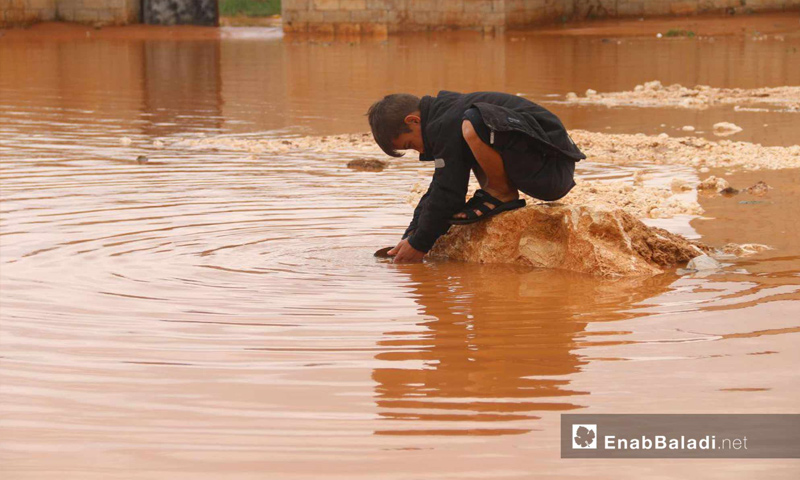“Winter is coming,” a phrase repeated by internally displaced people (IDPs) inside Syria to warn themselves of the need to prepare heating equipment other requirements for the cold season. However, as nearly one million Syrians live in camps in northwestern Syria, the needs are becoming more urgent and their provision more difficult.
There are about 1,153 camps in northwestern Syria, including 242 slum-like camps, according to the Director of the Syria Response Coordinators, Muhammad Hallaj, to Enab Baladi.
The number of IDPs in the camps has increased to more than 962,000 people due to the recent displacement movement from southern Idlib, according to Hallaj, who expressed fears of regime military operations in southern and western Idlib that could lead to new waves of displacement.
“The camps’ needs for heating are huge, and the organizations are unable to cover them because of their large number and the increase in the number of tents and displaced people, leading to a significant shortage of heating supplies,” added Hallaj.
Weak support and growing needs
According to an assessment published by the United Nations Office for the Coordination of Humanitarian Affairs (OCHA) on 5 November on winter needs in northwestern Syria, some 900,000 people in northwestern Syria are expected to benefit from winter assistance this year.
However, OCHA talked about a 40 percent funding gap, for the estimated requirements need 32 million USD to provide these essential items, while overall humanitarian response funding remains low and funds only 52 percent of the needs.
On the other hand, the winter needs of displaced and needy families in the camps have significantly increased this year, compared to previous years, according to Mohammad al-Ghosh, head of the internal team of the White Hands Organization.
Al-Ghosh attributed the reason for the increased needs to the continuous escalation by the regime forces and the Russian air force on the north, which caused the displacement of thousands of families.
With the increase of the needs, the provision of some of them has become very difficult, according to Ahmad Qattan, head of Shabab Saed Association. Qattan explained in an interview with Enab Baladi that fuel oil cannot even be provided, so it is not classified as a need.
The number of residents of the camps in northwestern Syria has increased due to the displacement of more than 440,000 people, after the regime forces’ attack on the countrysides of Hama and Idlib in August, according to a statement by the UN Deputy Secretary-General, Farhan Haq.
According to the United Nations, 70,000 people have also been displaced to these camps, after the start of the Turkish military operation in northeastern Syria on October 9.
Steps to remedy the suffering
Heating devices vary from one camp to another depending on the location of the camp and the available materials. Some of the camps rely on fuel (fuel oil or kerosene), and some rely on coal, firewood or pyrene (olive press residues). However, the worst devices of heating are those that rely on burning clothes and plastic materials, which can cause health problems to camp residents.
The camps are awaiting the distribution of heating support, but the response to this day has been weak. This is because a large part of the organization’s funding depends on donations, and to this day the atmosphere is still warm and there is no incentive for the donor to provide support for the winter season, according to Mohammad al-Ghosh.
On the other hand, some organizations have started service projects related to winter crises, such as projects of reparation of some roads and improvement of some tents. Shabab Saed Association has launched the “Preparation for Floods” project in Atme camps, according to Ahmad Qattan.
Qattan explained that the project is aimed at alleviating the suffering of the displaced people in the camps, as it has been launched in conjunction with the “Winter Campaign,” since the beginning of November, which covers all the main winter needs of the camps.

